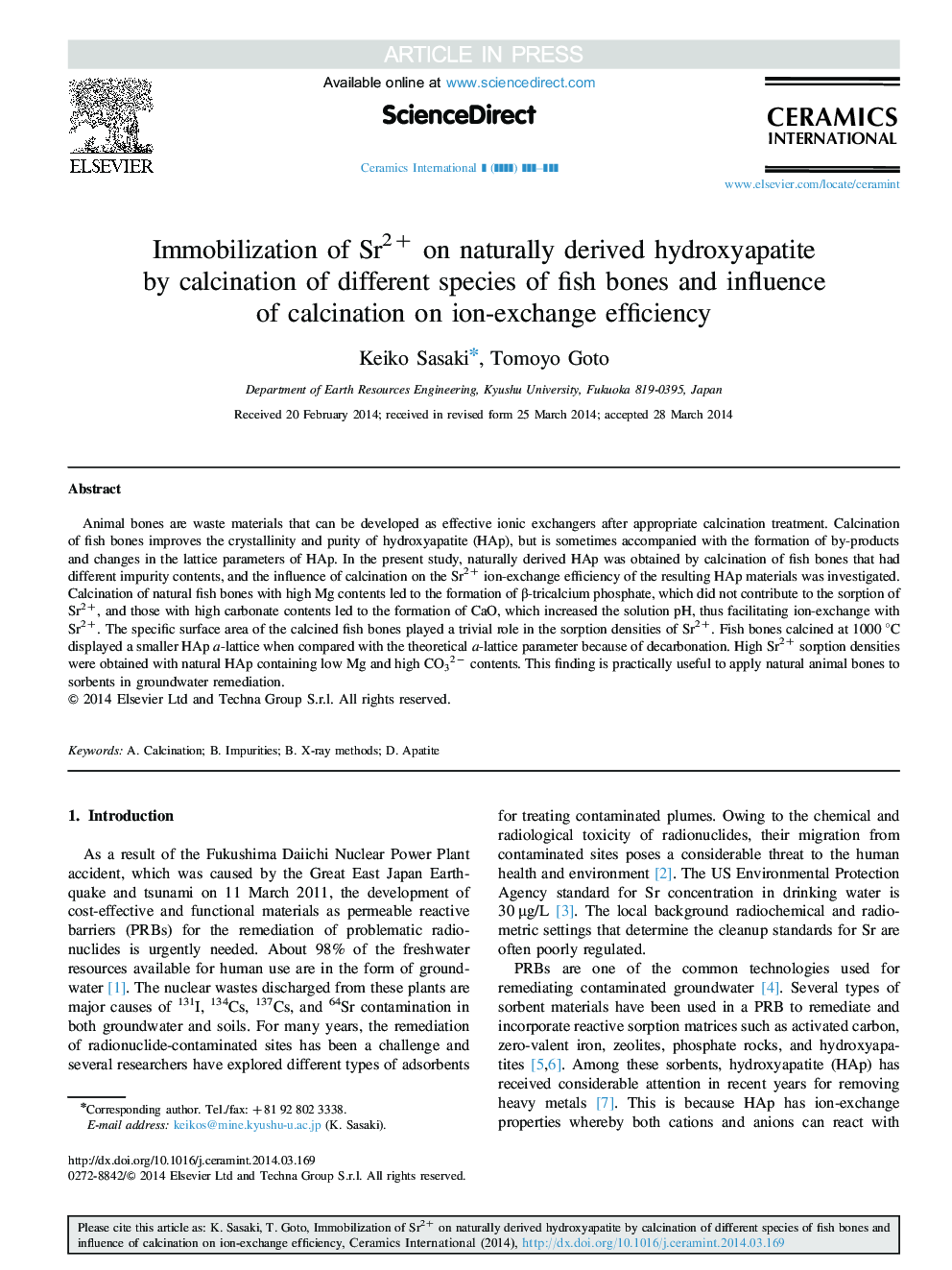| Article ID | Journal | Published Year | Pages | File Type |
|---|---|---|---|---|
| 10625404 | Ceramics International | 2014 | 8 Pages |
Abstract
Animal bones are waste materials that can be developed as effective ionic exchangers after appropriate calcination treatment. Calcination of fish bones improves the crystallinity and purity of hydroxyapatite (HAp), but is sometimes accompanied with the formation of by-products and changes in the lattice parameters of HAp. In the present study, naturally derived HAp was obtained by calcination of fish bones that had different impurity contents, and the influence of calcination on the Sr2+ ion-exchange efficiency of the resulting HAp materials was investigated. Calcination of natural fish bones with high Mg contents led to the formation of β-tricalcium phosphate, which did not contribute to the sorption of Sr2+, and those with high carbonate contents led to the formation of CaO, which increased the solution pH, thus facilitating ion-exchange with Sr2+. The specific surface area of the calcined fish bones played a trivial role in the sorption densities of Sr2+. Fish bones calcined at 1000 °C displayed a smaller HAp a-lattice when compared with the theoretical a-lattice parameter because of decarbonation. High Sr2+ sorption densities were obtained with natural HAp containing low Mg and high CO32â contents. This finding is practically useful to apply natural animal bones to sorbents in groundwater remediation.
Related Topics
Physical Sciences and Engineering
Materials Science
Ceramics and Composites
Authors
Keiko Sasaki, Tomoyo Goto,
